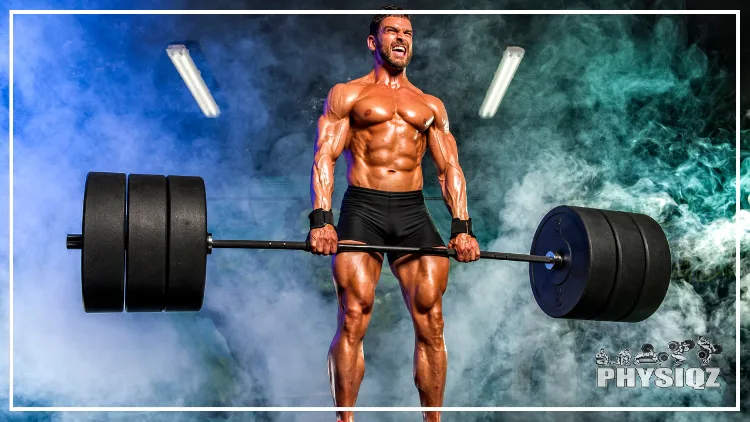
Deadlifts work various muscles, and different types such as sumo, conventional, trap bar (hex), dumbbell, single-leg, and Romanian deadlifts target different muscles.1
All in all the deadlift muscles worked are:
- Posterior Chain (Glutes, Lats, Erector Spinae)
- Upper and Lower Back Muscles (Traps, Rhomboids, Extensors)
- Legs (Hamstrings, Quads, Inner Thigh, Calves)
- Core (Rectus Abdominis, Transversus Abdominis, External Obliques, Internal Obliques)
- Shoulders (Medial Deltoids, Posterior Deltoids, Rotator Cuff)
- Arms (Forearm Muscles)
While this is an oversimplification since each deadlift targets different muscles, it serves as a basis of understanding.
The remaining of the article will discuss the importance of various types of deadlifts and how they emphasize certain muscle groups, the role of each muscles used in the deadlift and most importantly, how to choose the deadlift variation that’s works the right muscles for your goals.
Which Muscles Are Targeted by Deadlifts? (Muscles Worked in Deadlift)
The deadlift is a hip dominant compound movement that activates several muscle groups at the same time; the muscles include the posterior chain, the core, traps, quads, calves and back muscles. Posterior chain muscles are located at the back of the leg and the spine and comprise the hamstrings, glutes, lats and the erector spinae muscles which line the spine.2
During the first half of the deadlift movement where the bar is traveling from the ground to the knees, the quads will be target and primary movers. The last part of the movement involves moving the bar from the knees to the lock out position where the lifter is standing tall with the bar, this part will demand activation from the muscles from the glutes, hamstrings and mid and lower back.
Deadlifts may be done with barbells, kettlebells or dumbbells; and dumbbell deadlift muscles worked are the same as those done with a barbell but are better to address muscle imbalances. Depending on the variation of the deadlift that will focus on either the 1st or 2nd part of the movement more, each variation will target certain muscle groups more than the counterpart variation.
Conventional Deadlifts Muscles Emphasized: Lower back, glutes and hamstrings.
Sumo Deadlifts Muscles Emphasized: Quad muscles, glutes and adductors due to a wider foot placement.
Trap Bar (Hex Bar) Deadlifts Muscles Emphasized: Quad muscles since it’s a more upright movement.
Dumbbell Deadlifts Muscles Emphasized: Glutes and hamstrings muscles and more stretch at the bottom to a longer range of motion the dumbbells allow.
Single Leg Deadlifts Muscles Emphasized: Glutes and hamstrings muscles and is a unilateral exercise.
Posterior Chain (Glutes, Lats, Erector Spinae)
The posterior chain are among the muscles worked in deadlift and are heavily involved in the movement—these muscles are the primary movers of the deadlift and indicate the proper area of muscle engagement during deadlifts.
Glutes—glutes are the largest muscles in the human body and play a critical part in the deadlift exercise working to extend the hips.
By providing this function, the lifter is able to lock-out the deadlift which brings the barbell closer to the hips. When the lifter is lifting the barbell as they stand up, the hips are forced to move forward which is where the most active recruitment of the glutes is.
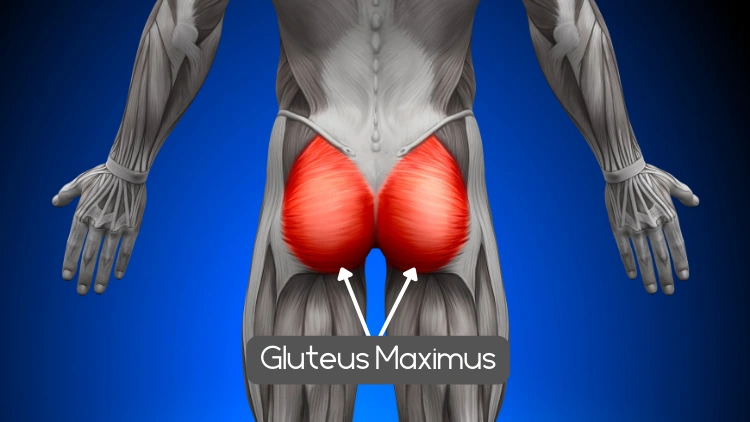
Source: decade3d via Canva.com3
Erector spinae—these muscles play two important roles in the deadlift, the first is that they prevent rounding of the spine by keeping the back extended and tightened which is critical to ensure a safe deadlift.
Rounding will increase shear forces for which the spine is not designed for; these are parallel to the spine, the spine is suited to handle compressional forces. Their second function is in the activation of the back permitting the spine to transition from a horizontal plane to an upright position.

Source: Hank Grebe via Canva.com4
Lats—the lat muscles will help maintain and keep the bar very close to the body through the entire movement. Maintaining the bar close to the body is a point of technical principle because if the barbell moves off the body, this can cause a loss in balance and when that happens, the hip extensor muscles (inner thigh, hamstrings and glutes) will overcompensate to move the hips forward to the bar for the lockout.
Lats are therefore critical to sustain an effective position in the movement and as they are the among the close grip lat pulldown muscles worked, deadlifts can help strengthen them.
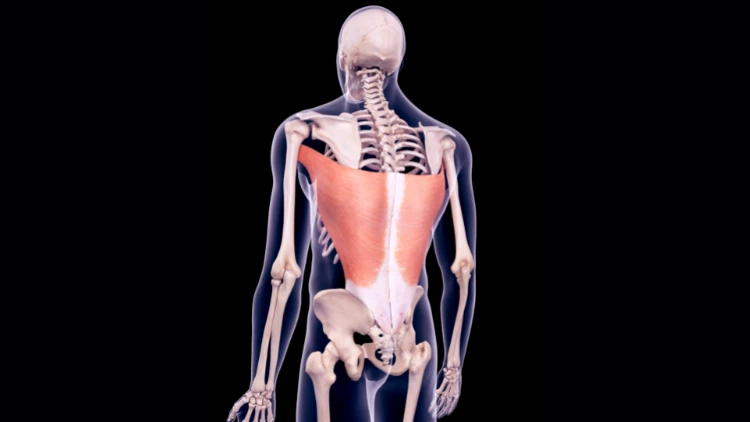
Source: Science Photo Library via Canva.com5
Back Muscles (Traps, Rhomboids, Lower Back)
The back muscles are heavily activated when doing the deadlifts and these include the traps and rhomboids.
Traps—the traps support and help maintain a neutral position for the shoulders thus preventing them from rounding, this is particularly true for the low and mid traps which traverse (run along) the shoulder blades.
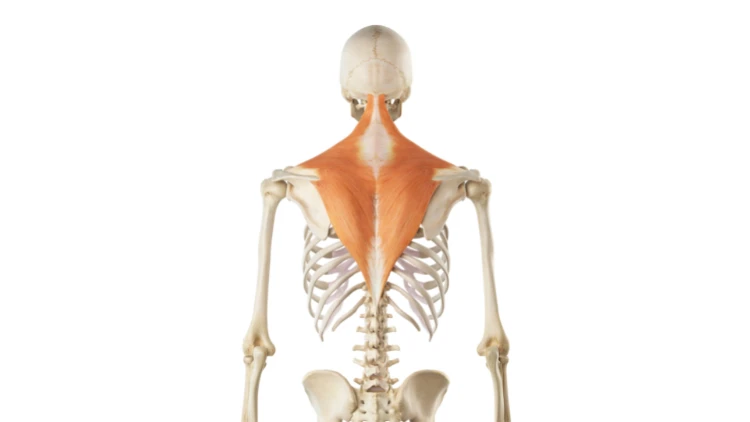
Source: Science Photo Library via Canva.com6
Rhomboids—these muscles are located at the lower part of the neck and upper inner back and they work to ensure the shoulder maintains a proper position throughout the lift which is essentially the same role as the traps. The shoulders must always be maintained in an upright position in the lock out at the top of the lift.
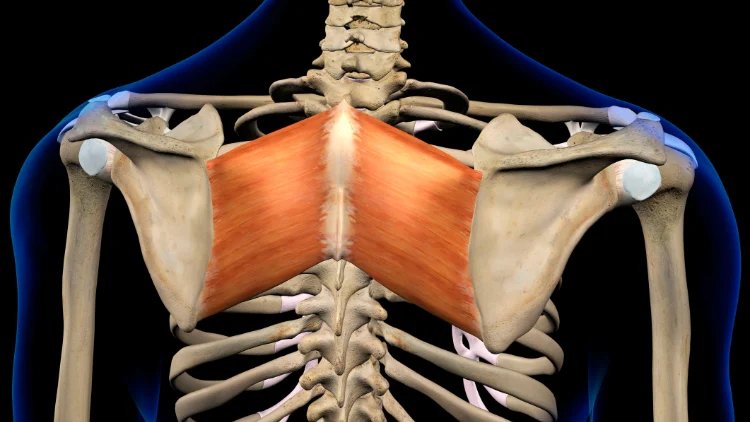
Source: Hank Grebe via Canva.com7
Lower back—the lower back is among the muscles targeted by the conventional deadlift for two reasons, with the first being this type of deadlift utilizes the hip hinge more so than the other deadlifts.
Hip hinge refers to the body bending downwards at the mid-section. The hip hinge will recruit the lower back due to the need for the back to remain extended when the bar is being lifted off the floor.
The second cause is due to the lever arm being further away from the body than sumo or hex bar deadlifts and causing more axial load.
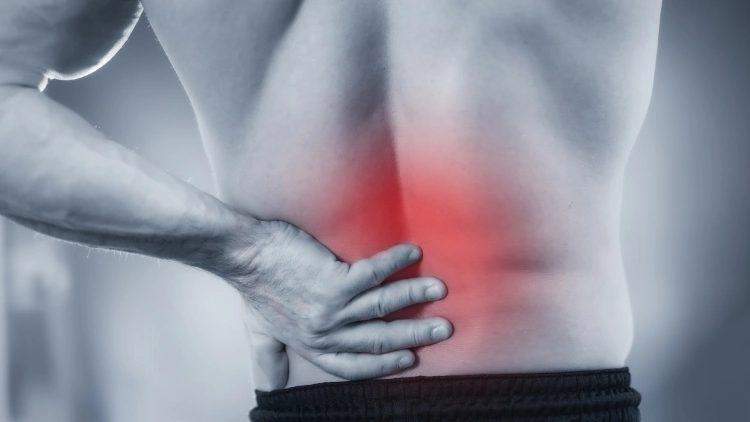
Source: microgen via Canva.com8
Core Muscles (Rectus Abdominis, Transversus Abdominis, External Obliques, Internal Obliques)
The core muscles which broadly include the abdominals and obliques all play a role in stabilizing the spine and ensures it stays in position to handle the massive load. The erector spinae muscle’s role mentioned before is to extend the spine, but these core muscles ensure that the spine does not overextend.
An overextension of the spine may cause the erectors to not engage. The abs happen to be among the hardest muscle to grow making deadlifts a must have for lifters who are looking to grow these muscles.
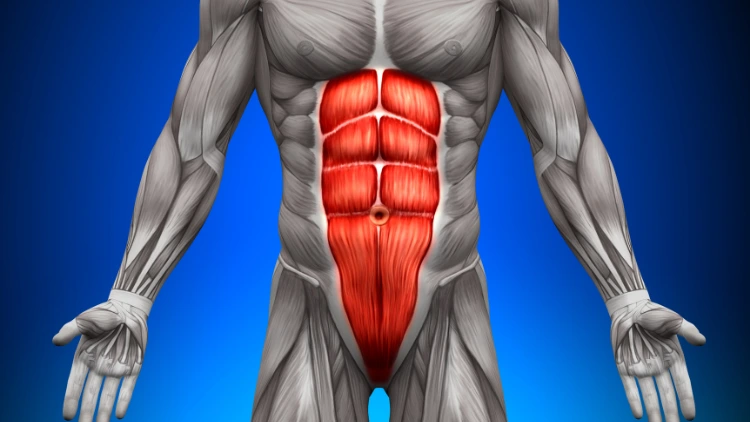
Source: decade3d via Canva.com9
Leg Muscles (Hamstrings, Quads, Inner Thigh, Calves)
The deadlift primarily works the leg muscles, including the quads, inner thighs, and hamstrings, which are part of the posterior chain.
Quads—these muscles are located at the front of the thighs which play a part in extending and straightening the knees in the bottom half of the movement but they are not as heavily involved in the movement as they would be in back squats.

Source: janulla via Canva.com10
Hamstrings—the hamstrings play two important roles in the deadlift; their first role is that they stabilize the knee joint during the start position when the knees are in a bent position when the weight is about to be pulled off the floor. The tension from the hamstrings will help keep the knee stable by the forces created by the quads to extend the leg.
Secondly, they become a synergist to support the glutes during the lock when they are extending the hips. Synergist muscles produce a similar motion as the agonist which are the main movers (glutes) acting as neutralizers.
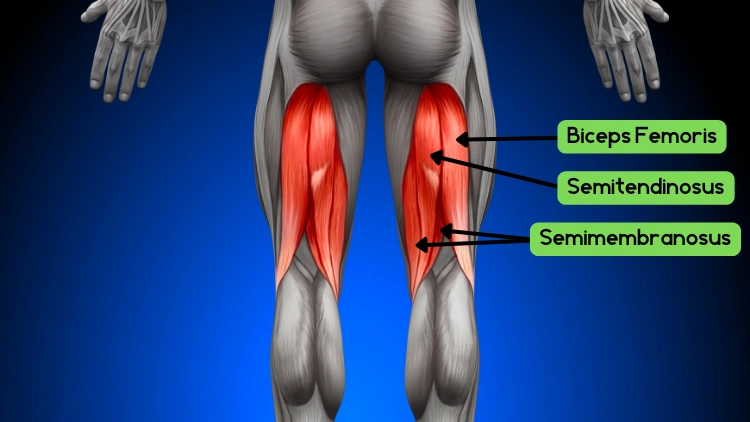
Source: decade3d via Canva.com11
Inner thighs (adductor magnus)—the inner thighs play a role in extending the hips performing a function similar to the glutes by allowing the hips to extend fully during the top position of the movement that is the lock out.
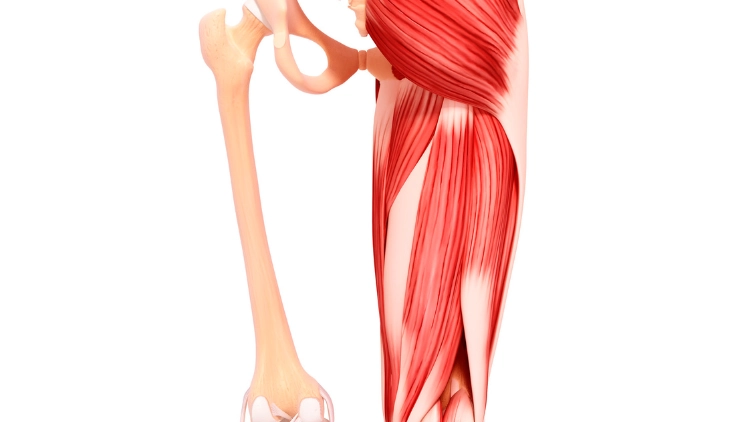
Source: Science Photo Library via Canva.com12
Calves—during the initial phase of the deadlift, the ankles plantar flex meaning they go into extension due to the bar being lifted off the floor which is also true for hips and knees. In the second phase of the movement, when the barbell is being lowered to the ground, the knees, hips and ankles bend and is the flexion part of the exercise— dorsiflexion in reference to the ankles.
The calves play a role in both plantar flexion of the ankles and knee flexion.
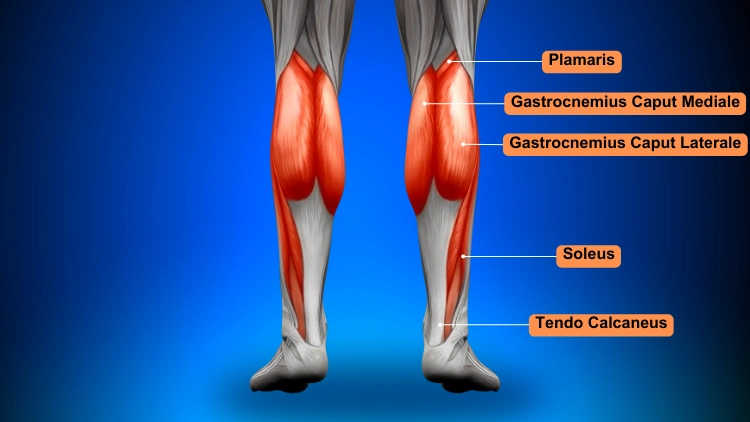
Source: decade3d via Canva.com13
Shoulders Muscles (Medial Deltoids, Posterior Deltoids, Rotator Cuff)
The medial deltoids and posterior are two of three components of the shoulder muscle, with the other being the front deltoid. Both of these assist and support by acting as stabilizers for the deadlift movement.
The rotator cuff also assists in the movement.
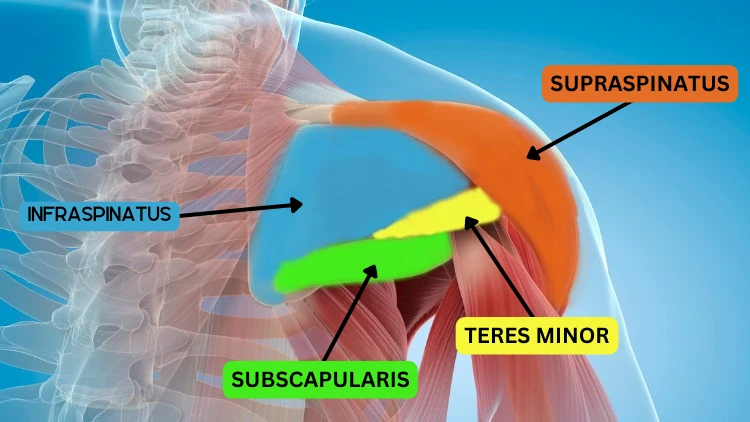
Source: Science Photo Library via Canva.com14
Arm Muscles (Forearms)
The forearms are not actively recruited but rather isometrically, and the deadlift works various muscles when lifting heavy.
The forearms, while not actively targeted, are critical to having excellent grip when lifting a substantial load, and as a result can get a workout and grow.
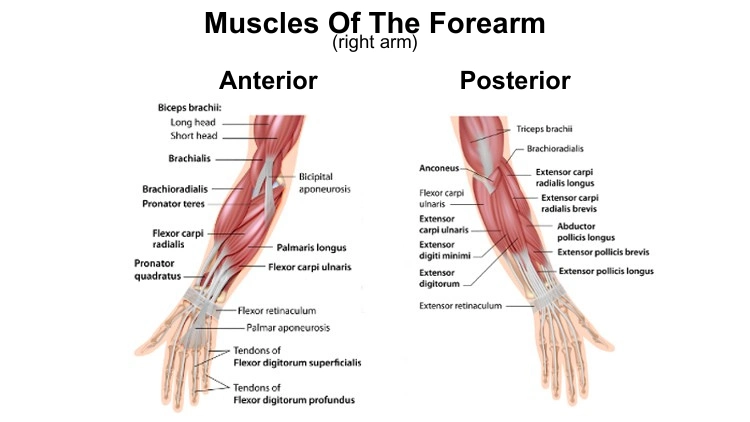
Source: Alila Medical Media on Shutterstock15
The different variations of deadlift whether it be sumo vs trap bar (hex) vs dumbbell vs single leg tend to activate certain muscle groups more than others making each variation unique in its execution and activation of muscle groups that it can produce for the lifter.
Sumo Deadlift vs Conventional Deadlift Muscles Worked
While the conventional deadlift is considered a hip dominant movement, the sumo deadlift is deemed to be a knee dominant exercise and the muscles sumo deadlifts work the same as the conventional deadlift, but the sumo tends to actively employ the quads more.
Here’s the muscles each that sumo deadlifts emphasize in comparison to conventional deadlifts and why:
Quads—the inside of the quad (vastus medialis), the outside of the quad (vastus lateralis) and the outside of the calf (tibialis anterior) have an increased muscular activation in the sumo deadlift than they would in the conventional deadlift.16
Glutes and adductors—sumo deadlifts have a wider foot placement than conventional deadlifts which means that glutes and adductors (external rotator muscles) are heavily recruited and it is critical for a lifter to have strong hip rotator muscles to this variation.
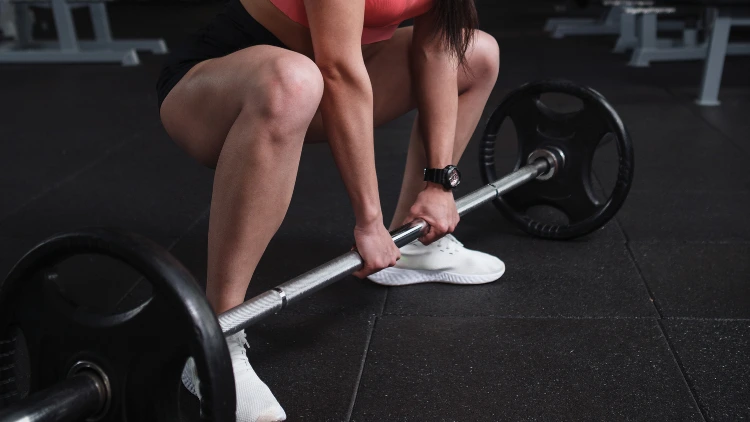
Source: madproduction via Canva.com17
The other muscles used in this movement include:
- Back muscles including the traps, rhomboids and the lower back
- Hamstrings
- Calves
- Core muscles including the abdominals and obliques
- Traps
- Hip flexors
- Forearms flexors
- Medial deltoids
Trap Bar Deadlift Muscles Worked (Hex Bar Deadlift Muscles Engagement) vs Barbell Deadlifts
The trap bar deadlift or hex bar deadlift uses a trap bar instead of a barbell, engaging the same muscles as a barbell deadlift. However, the hex bar deadlift tends to place greater emphasis on the quads.
Trap bar deadlift has the same range of motion (the path and distance that the bar travels) as the conventional deadlift and the stance is also similar. The use of a trap bar however, requires the use of a neutral grip.
As a result of this change, the lifter can haul much more weight than they would with the conventional barbell deadlift.18
The trap bar has similarities to the sumo deadlift in that the chest remains upright but emphasizes the:
Quads— the trap bar deadlift gives lifter the benefits of the squat without the bar being placed on the back in barbell deadlifts, engaging the quads more and as a consequence, the outside of the quad (vastus lateralis) is much more engaged in the trap bar deadlift than it is in the barbell deadlift.19
Lower back, ankles and hips—there is less demand placed on the lower back, hips and ankles with hex bar deadlifts vs barbell deadlifts but there is greater load placed on the knee joint.
Hamstring and erector spinae—these two muscles are less activated in the trap bar deadlift than they are in the barbell deadlift.
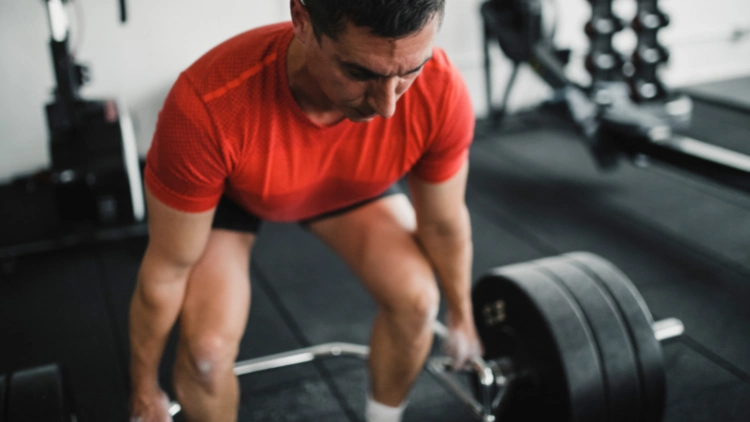
Source: SolStock via Canva.com20
When using a trap bar for deadlifts, the muscles worked include not only the quads, lower back, and hips, but also other muscles such as:
- Glutes
- Adductor muscles
- Core muscles including the abdominals and obliques
- Traps
- Forearms flexors
- Calves
- Medial deltoids
Dumbbell Romanian Deadlift vs. Traditional Deadlift: Muscles Worked in RDL (Romanian Deadlift)
The Romanian deadlift differs from the conventional deadlift in that the starting position is just in front of the hips while the latter commences with weight on the ground, and as a result, it will activate certain muscles more than the conventional deadlift including the glutes and hamstrings.
In addition, dumbbell RDLs have the added benefit of having a greater ROM (range of motion) and stretch than barbell RDLs so they can be better for hypertrophy.
Romanian deadlift is a hip hinge focused movement and enhances flexibility of the hamstrings and low back—including them into workout programs can be one way to harden muscles and they also happen to be one of the squat accessory lifts.
The primary muscles worked in RDLs are:
Glutes—the glutes are highly activated during this movement more than the conventional deadlifts. In fact the level of activation of the glutes in the Romanian deadlift comes only second to barbell hip thrusts, with squats following closely behind.21
The reason for this is that the quads have little involvement in the movement resulting in an increased engagement of the glutes.
Hamstring—hamstrings are very much recruited in the Romanian deadlift also because of the diminished role of the quads. When compared to other exercises that target the hamstrings such as the leg curl, glute-ham raise and good morning, the Romanian deadlift has been shown to have superior maximized recruitment of the hamstrings.22
Quads—even though quads are involved in this movement, their use is very minimal compared to the conventional deadlift.
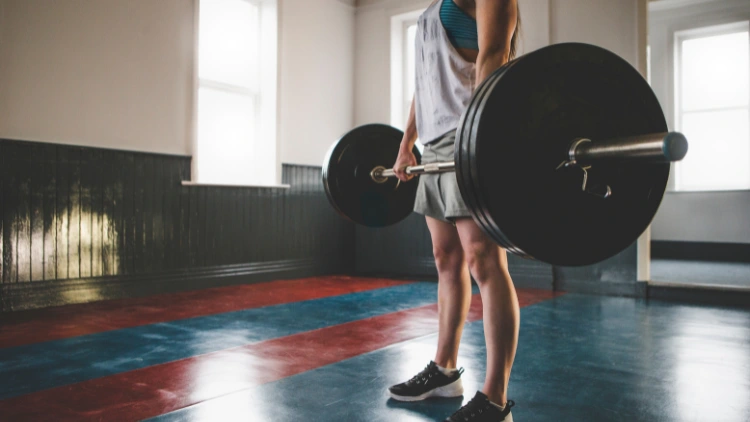
Source: SolStock via Canva.com23
The other muscles used in this movement include:
- Lower back
- Adductors
- Trapezius
- Calves
- Medial deltoids
- Forearm flexors
Single Leg Deadlift Muscles Worked vs Conventional Deadlifts
The single deadlift is a unilateral movement (one sided movement) and the single leg deadlift muscles worked include the posterior chain which are pivotal to completing the movement.
The primary movers in single-leg deadlifts are the hamstrings and glutes.
Single leg deadlift benefits include addressing muscle imbalances and improving stability by targeting one leg at a time.
They can be performed with a dumbbell or kettlebell for increased intensity.
All in all, single leg deadlifts focus on these muscles:
Hamstrings—the hamstrings are activated more in this movement than they would be in conventional deadlifts due to performing the hip hinge in the initial and ending position of the movement.
Glutes—the glutes are also engaged in the movement and together with the hamstrings, they are the main primary movers.
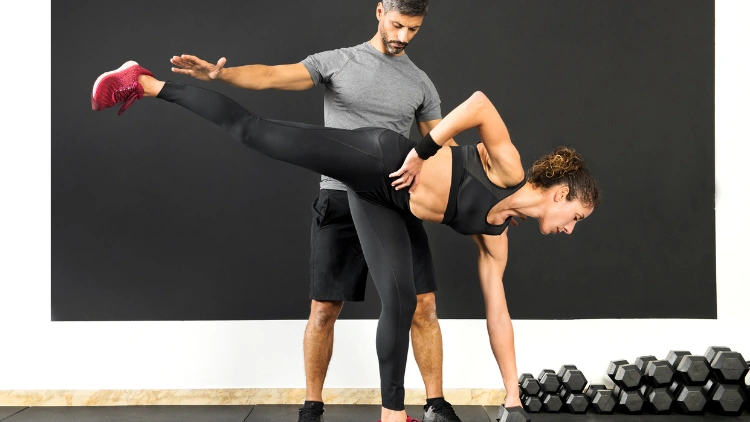
Source: Photology1971 via Canva.com24
The other muscles used in this movement include:
- Lats
- Posterior tibialis located in the foot
- Outer shin (peroneus longus)
- Traps
- Erector spinae
- Core muscles (obliques)
- Medial deltoids
- Forearm flexors
- Calves
How To Decide Which Deadlift Variation To Use & Which Muscles To Target
Choosing which deadlift variation will depend on the training goals of the lifter and what they are looking to benefit from the movement—that is what target muscles they are looking to strengthen and grow.
Many times body stature will play a role into what type of deadlift is more suitable; for example, the trap bar deadlift suits taller people while the sumo deadlift is more at home with shorter individuals or those with retroverted hips—the abnormal backward rotation of the hips in relation to the knee joint that often causes an irregular walking stance, and uncharacteristic stress on the lower back, knees and hips. This is also known as hip retroversion and is why some people feel more comfortable squatting with their toes angle more outward than others.
A summary of body type characteristics suited for either conventional or sumo deadlift appears below:
| Conventional Deadlift | Sumo Deadlift |
| Excellent hip internal rotation & flexion | Restricted hip internal rotation & flexion |
| Long arms | Short arms |
| Short thighs | Long thighs |
| Neutral hips | Retroverted hips |
Ultimately, it is better to take advantage of the separate muscles targeted by the different variations to prevent muscle imbalances and allow for a well-rounded workout that develops all the muscles. Thus, combining different variations will help address weaknesses since some variations tend to focus more on certain muscle groups.

Source: StefanDahl via Canva.com25
This is achieved by doing one type of deadlift in one mesocycle and then alternating into another one in the next. A mesocycle denotes a training block within a strength training routine and can last anywhere between 3-4 months.26 Training using a mesocycle rather than simply ‘working out’ is a solid way to build muscle and gain strength using scientific principles that never change.
By alternating variations, the lifter is thus able to draw benefits from all the movements. In summary, the list below should point a lifter to the muscles mostly targeted by each variation:
- Conventional deadlift—this deadlift is best for hypertrophy (muscle growth) since it has a higher range of motion and places high stress on the lower back but also builds it. Requires the greatest mobility to perform.
- Sumo deadlift—sumo deadlift is quad intensive and heavily recruits the hip extensors which makes it excellent to carry over to squats. It places lower stress on the lower back than conventional and is ideal for shorter people.
- Trap bar deadlift— trap bar deadlift heavily employs the quads due to grip position and is great at improving the squat and is an ideal addition for those looking to grow their quads due to being hindered by bad leg genetics. It places less stress on the lower back, and has less involvement of the hamstrings and erector spinae. Trap bar deadlift is easiest to learn and great for athleticism.
- Romanian deadlift—for lifters looking to recruit their glutes and hamstrings, the Romanian deadlift foots the bill. However, the quads have a less pronounced involvement in this movement.
- Single leg deadlift—the single leg deadlift is unilateral, targeting primarily the hamstrings and glutes and will help address muscle imbalances. Even though it is not possible to go heavy on this, it is great at improving a lifter’s balance which the other deadlifts cannot offer as a benefit.
Other variations of deadlifts that can be included in a workout regimen and mesocycle include:
- Snatch grip deadlift
- Stiff leg deadlift or straight leg deadlift
- Deficit deadlift
- Hack lift
- Pause deadlift
- Dumbbell deadlift
- Kettlebell deadlift
- Staggered deadlift
- Suitcase deadlift
- Doran deadlift
- Reverse band deadlift
The deadlift is a compound movement that builds enormous strength and carries over to other exercises and everyday activities.
However, many shy away from one of the three big lifts (squats, deadlifts, and bench press) without first considering which muscles are targeted by deadlifts and which type of deadlift will help them achieve their goals. Thus, knowing the deadlift muscles worked, and the muscles worked with deadlift variations can help gym goers determine which is best for them.
Frequently Asked Questions
Do Deadlifts Work The Lower Back & Shoulders?
Yes, deadlifts do work the lower back and shoulders. The lower back is engaged but any pain experienced is an indication that the form on the deadlift is compromised.
The shoulders, in particular the middle and rear deltoids act as stabilizers for the movement.
Deadlifts vs Squats: Which Is Better?
Both compound movements confer numerous benefits; which is better depends on the training goals of the lifter. Those looking to build the quads should turn to squats—deadlifts are more suited to working the back of the leg muscles (hamstrings, glutes and calves) and back muscles.
However, it is better to incorporate both exercises in a training regimen to get the best of both worlds.
What Are the Primary Movers for Deadlifts?
The primary movers of the deadlift serve to extend the knees and hips and they include the hamstrings, lower back, erector spinae and the glutes.
What Are the Benefits of Doing Deadlifts?
Deadlifts provide a myriad of benefits including strengthening the lower back, boosts metabolism which leads to weight loss, increases bone density and failed reps can easily be dropped making it relatively safe. They are a simple exercise to do using minimal equipment, build stronger legs and core muscles, improves posture and increases grip strength which carries over to other exercises and daily activities.
What Muscles Does Deadlift Work When Doing Pause & Deficit DLs?
Like the conventional deadlift, these two types of deadlifts work hamstrings, glutes, calves, erector spinae, upper and lower back, core muscles, inner thighs, calves and traps. The only difference is that deficit deadlifts are executed from a raised platform which increases the ROM and deficits involve pausing approximately at mid shin for 2-3 seconds.
References
1MRBIG_PHOTOGRAPHY. Canva. Accessed 19 April 2023. <https://www.canva.com/photos/MAEJKgrQL4o-deadlift/>
2Wikipedia. (2021, October 11). Posterior chain. Retrieved 2022, from <https://en.wikipedia.org/wiki/Posterior_chain>
3decade3d. Canva. Accessed 19 April 2023. <https://www.canva.com/photos/MADerAJvWMU-gluteus-maximus-anatomy-muscles/>
4Grebe, Hank. Canva. Accessed 19 April 2023. <https://www.canva.com/photos/MAD8-XkZ3xQ-male-erector-spinae-back-muscles-in-isolation-on-skeleton/>
5Science Photo Library. “F017/1255.” Canva. Accessed 12 April 2023. <https://www.canva.com/photos/MADq3vbyn-k-f017-1255/>
6Science Photo Library. “”Human trapezius muscles.” Canva. Accessed 12 April 2023. <https://www.canva.com/photos/MADmTLHptgU--human-trapezius-muscles/>
7Hank Grebe. “Male Rhomboid Major Back Muscles in Isolation on Skeleton.” Canva. Accessed 12 April 2023. <https://www.canva.com/photos/MAD9YMm5tt4-male-rhomboid-major-back-muscles-in-isolation-on-skeleton/>
8microgen. Canva. Accessed 19 April 2023. <https://www.canva.com/photos/MADm1DXjhew-lower-back-pain/>
9decade3d. Canva. Accessed 19 April 2023. <https://www.canva.com/photos/MADerFwn3js-abs-anatomy-muscles/>
10janulla. Canva. Accessed 19 April 2023. <https://www.canva.com/photos/MADE-Sq7uLk-quadriceps-female-anatomy/>
11decade3d. Canva. Accessed 19 April 2023. <https://www.canva.com/photos/MADerMxdfBI-hamstrings-anatomy-muscles/>
12Science Photo Library. Canva. Accessed 19 April 2023. <https://www.canva.com/photos/MADmTB-2Tfo--human-musculature/>
13decade3d. Canva. Accessed 19 April 2023. <https://www.canva.com/photos/MAC_U2yFahk-calves-anatomy-muscles/>
14Science Photo Library. Canva. Accessed 19 April 2023. <https://www.canva.com/photos/MADmTDg8VA4--shoulder-muscles/>
15“Muscles Forearm Anterior Posterior View Stock Illustration 147943889.” Shutterstock. Accessed 19 April 2023. <https://www.shutterstock.com/image-illustration/muscles-forearm-anterior-posterior-view-147943889>
16Rafael F Escamilla 1, A. C. (2002, April). An electromyographic analysis of sumo and conventional style deadlifts. Retrieved 2022, from <https://pubmed.ncbi.nlm.nih.gov/11932579/>
17madproduction. Canva. Accessed 11 April 2023. <https://www.canva.com/photos/MAFLBvgeRPU-vertical-shot-of-a-strong-female-athlete-lifting-barbell-in-sumo-squat/>
18Paul A Swinton, A. S. (2011, July). A biomechanical analysis of straight and hexagonal barbell deadlifts using submaximal loads. Retrieved 2022, from <https://pubmed.ncbi.nlm.nih.gov/21659894/>
19EDWARD JO, K. A. (2022). Electromyographic Examination of Hip and Knee Extension Hex Bar Exercises Varied by Starting Knee and Torso Angles. Retrieved 2022, from <https://www.ncbi.nlm.nih.gov/pmc/articles/PMC9022700/>
20SolStock. Canva. Accessed 19 April 2023. <https://www.canva.com/photos/MAEIyC-u1uo-deadlifting-a-weighted-bar/>
21Jose Delgado, E. J. (2019, October). Comparison Between Back Squat, Romanian Deadlift, and Barbell Hip Thrust for Leg and Hip Muscle Activities During Hip Extension. Retrieved 2022, from <https://pubmed.ncbi.nlm.nih.gov/31356511/>
22Matt J McAllister, K. G. (2014, June). Muscle activation during various hamstring exercises. Retrieved 2022, from <https://pubmed.ncbi.nlm.nih.gov/24149748/>
23SolStock. Canva. Accessed 19 April 2023. <https://www.canva.com/photos/MAEErqsx2qo-professional-female-powerlifter-deadlifting-heavy-weight/>
24Photology1971. Canva. Accessed 19 April 2023. <https://www.canva.com/photos/MADqcF-frmQ-woman-doing-a-single-leg-deadlift-in-a-gym/>
25StefanDahl. Canva. Accessed 19 April 2023. <https://www.canva.com/photos/MACesJTalZg-man-doing-deadlift-training/>
26Daniel Lorenz, S. M. (2015, November). CURRENT CONCEPTS IN PERIODIZATION OF STRENGTH AND CONDITIONING FOR THE SPORTS PHYSICAL THERAPIST. Retrieved 2022, from <https://www.ncbi.nlm.nih.gov/pmc/articles/PMC4637911/>